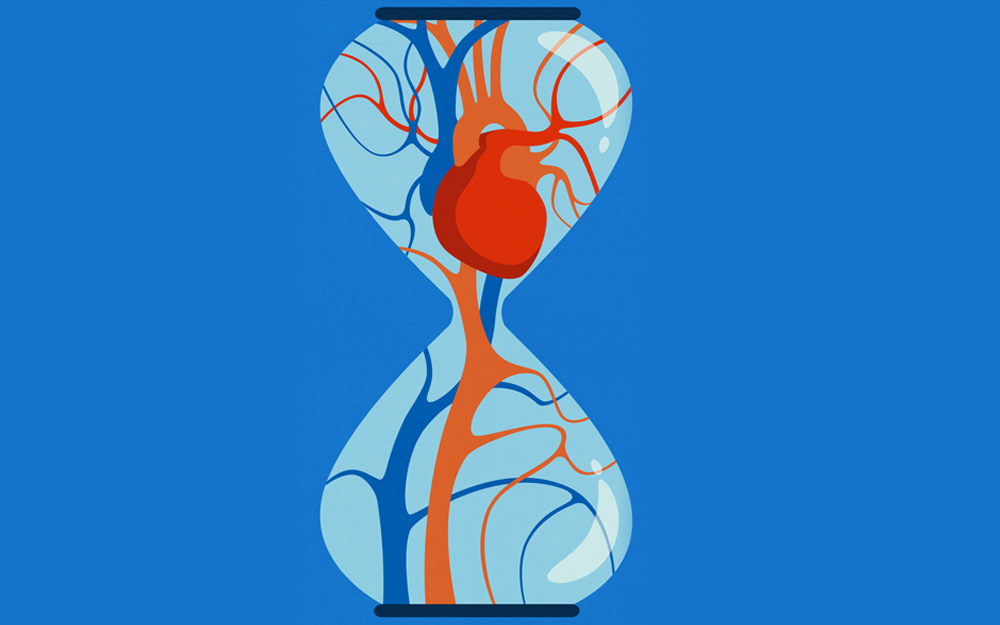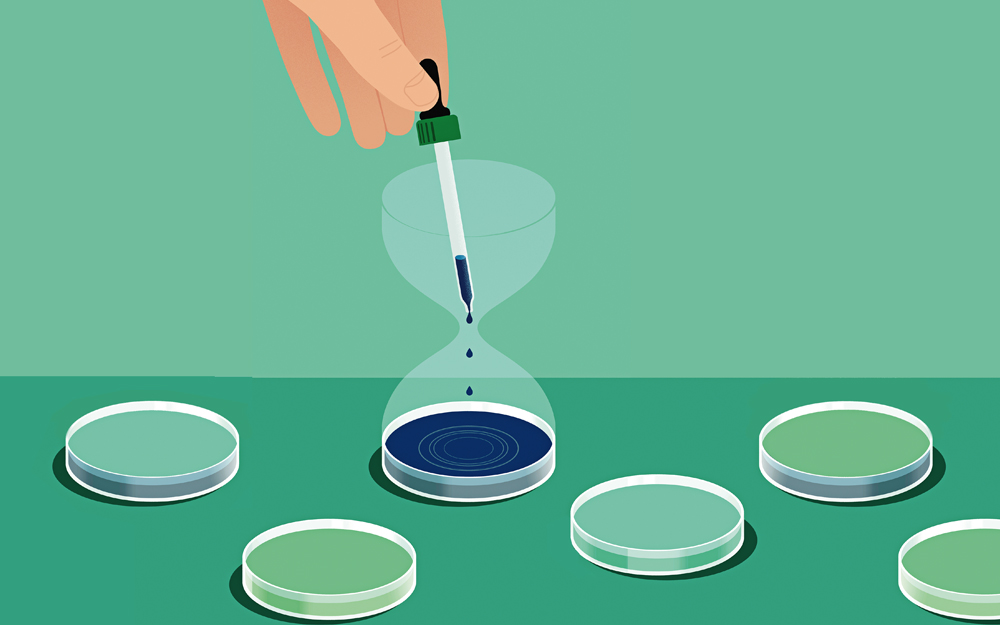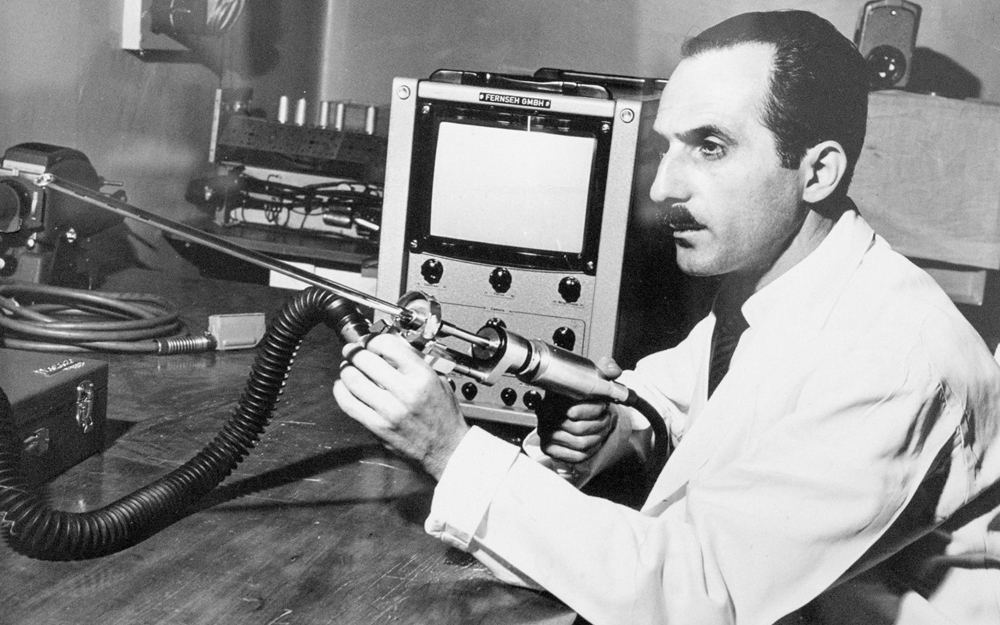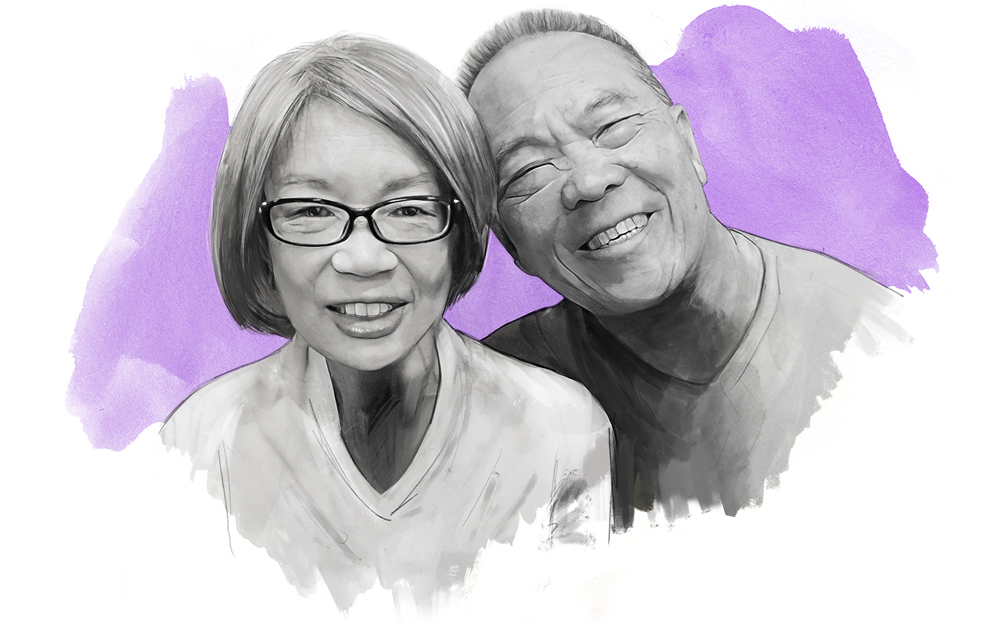Lesson No. 2: Collaborate Strategically to Amplify Great Ideas
Date
November 15, 2021

Date
November 15, 2021
Medical providers featured in this article
In Brief
{{cta-block}}
This article is one in the series How to Think Like a Scientist: A Crash Course. In this series, we investigate the practices and mindsets that help drive great science. We asked Cedars-Sinai researchers and experts to weigh in about the processes scientists use to shape their work and drive progress.
We’re all familiar with the lone genius myth—a wild-haired scientist mixing burbling chemicals in a basement laboratory—but the reality is that the best scientists team up with others to pursue ambitious work. Here’s how they find the right collaborators to solve big problems.
FORMULA
The Power of More
Paul Noble, MD, director of the Women’s Guild Lung Institute, has spent his career studying the mechanisms of lung inflammation and fibrosis.
He’s made many of his career decisions with collaboration explicitly in mind: His roles at Johns Hopkins University, Yale University, Duke University—and now, Cedars-Sinai—have been driven by his desire to propel great research with the very best partners. “Collaboration has been one of the most salient aspects of my scientific career development,” he says.
What’s the formula for success? Here, he spells it out.
(Good Idea + Advanced Technology) x Resources = Discovery
During an early-career fellowship at the University of Colorado and the National Jewish Health research center in the early 1990s, Noble was investigating immune cells known as macrophages, which seemed to be malfunctioning in ways that led to lung scarring. He identified a specific sugar, a glycosaminoglycan, that was modified in lung inflammation and triggered macrophages to drive the scarring. He wrote a paper on the finding.
Eager to learn how this sugar could induce genes that might be influencing these activities, he found a team at Johns Hopkins that had developed new technology to identify genes that were expressed by cells grown in culture. It was just what he needed.
With support from the National Institutes of Health (NIH), Noble joined the Johns Hopkins team to learn these techniques and technology. Ultimately, he identified a handful of genes linked to this type of lung scarring.
Scientific Skills + Big Vision = Leaps Forward
Later in Noble’s career, when he was at Duke, he pondered a fundamental question: Where do the cells that cause scarring come from? There was a raging debate about whether they might come from the lining of the lungs, called the epithelium. To test the idea, he’d need some help.
He zeroed in on Brigid Hogan, PhD, a brilliant developmental cell biologist also at Duke who had been a pioneer in developing the technique called "lineage labeling." The process could help Noble follow the fate of these epithelial cells.
Noble was ready to support the collaboration with funding and a bright, budding pulmonary physician scientist in the Duke fellowship led the charge in Hogan’s lab. In the end, Hogan was moved by Noble’s pitch that their work could fuel progress in the field and ultimately improve lives. "It’s about persuading others," he explains. "Can I get them excited about the larger vision?"
Time x Success = Create Your Scientific Dream Team
For many scientists, including Noble, achieving their biggest scientific goals requires them to move to where the best collaborators are at the time.
The payoff of this approach often comes much later. Since joining Cedars-Sinai in 2013, Noble has assembled a group of talented physicians and scientists who can propel big projects. "Because of the resources we have here, I’ve been able to bring together people I’ve always wanted to work with," he says. "Collectively, we work to find new treatments for advanced lung diseases."
KEY INSIGHT
The Fine Line Between Competition and Collaboration
Shelly Lu, MD, director of the Karsh Division of Gastroenterology and Hepatology, and José M. Mato, PhD, a research professor at the CIC bioGUNE in Bilbao, Spain, have collaborated for decades. They've co-authored more than 100 papers on such topics as liver injury. Lu explains their success. "It's important to work with people who you trust and have expertise that complements yours, because you won't succeed if you don't have more than one point of view," she says. "As a Spaniard, Mato is mainly funded by Spanish and European grants. We're not competing for resources, we're pooling them."
How to Think Like a Scientist: A Crash Course
{{column-start}}
{{column-end}}
{{column-start}}
{{column-end}}
{{column-start}}
{{column-end}}
{{column-start}}
{{column-end}}
{{column-start}}
{{column-end}}
{{column-start}}
{{column-end}}





